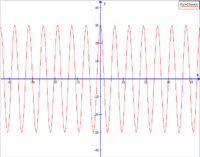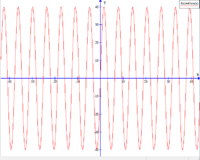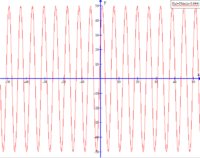Good morning all,
I'm doing some course work for an HNC and have got a bit stuck on a question and hope somebody could be of some assistance;
The Question Reads;
"Two signals are are sensed by a signal processor
V1=40sin(4t)
V2=Acos(4t)
The signal processor adds the signal together to form a third signal that can be described as;
50sin(4t+α)
Determine the value of A (the amplitude of ? 2 ).
Use to plot/model the inputs and output of the signal processor. How do you think graphical methods of sine wave combination compare with analytical methods?"
By using the Sin(a+b) and some basic trig I've come up with A=30 and α=(36.87deg=0.644rad)
I have then graphed the signals as F(x)=40sin(x) etc.
The issue I'm having is explaining how the graphical methods of sine wave combination compare with analytical methods. If any of you can shed some light and help me understand further it would be appreciated massively.
I'll attach an image of the three waves I've got to below.
Many Thanks
I'm doing some course work for an HNC and have got a bit stuck on a question and hope somebody could be of some assistance;
The Question Reads;
"Two signals are are sensed by a signal processor
V1=40sin(4t)
V2=Acos(4t)
The signal processor adds the signal together to form a third signal that can be described as;
50sin(4t+α)
Determine the value of A (the amplitude of ? 2 ).
Use to plot/model the inputs and output of the signal processor. How do you think graphical methods of sine wave combination compare with analytical methods?"
By using the Sin(a+b) and some basic trig I've come up with A=30 and α=(36.87deg=0.644rad)
I have then graphed the signals as F(x)=40sin(x) etc.
The issue I'm having is explaining how the graphical methods of sine wave combination compare with analytical methods. If any of you can shed some light and help me understand further it would be appreciated massively.
I'll attach an image of the three waves I've got to below.
Many Thanks



